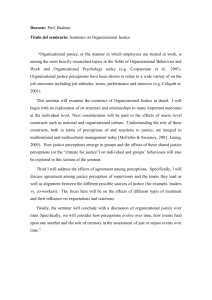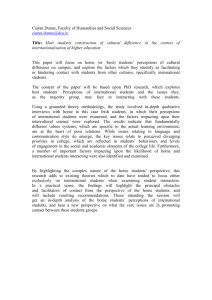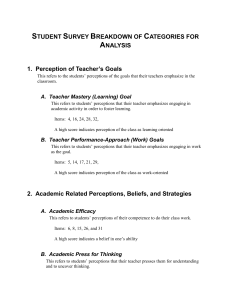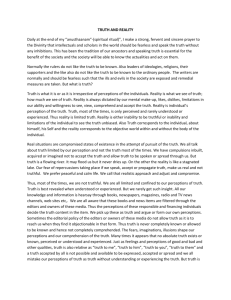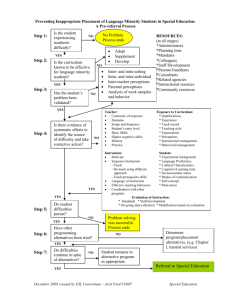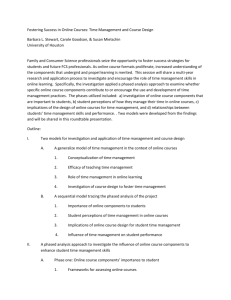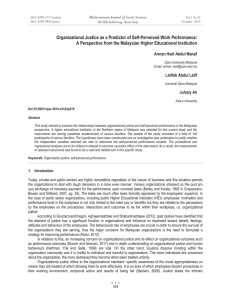SIOP-Industrial-Organizational Psychology Learning Segment
advertisement
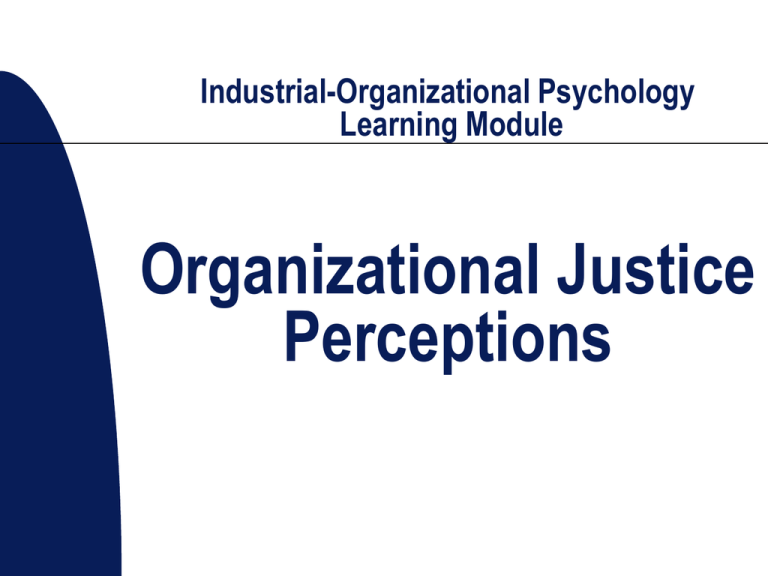
Industrial-Organizational Psychology Learning Module Organizational Justice Perceptions Think of a time you’ve been unfairly treated at work Were you ever treated rudely or disrespectfully? Were you up for a promotion / raise / job, and didn’t get it when you thought you should have? Why was it unfair? How did you know? How did you react? Did you take action? Why or why not? Lesson Objectives At the end of this lesson, you should be able to: State why managing perceptions of justice is important to organizations Distinguish between three different elements of justice perceptions List factors that influence perceptions of justice Justice Perceptions are important Justice Perceptions: employee judgments about whether their work situation is fair Justice Perceptions in organizations have been found to be related to: Job Satisfaction Organizational Commitment Job Performance Withdrawal Behaviors Counterproductive behaviors Self-perceptions Types of Justice Perceptions Distributive Justice: perceptions of the fairness of a particular outcome Procedural Justice: perceptions of whether the process used to make the decision was fair Interactional Justice: perceptions of whether organizational agents implement procedures fairly, by treating people respectfully and explaining decisions adequately Distributive Justice Rules for allocating resources – resources are distributed to employees with respect to their abilities or contributions Equality – resources are distributed so each person gets the same outcome, regardless of their contributions Need – resources are distributed to the person who needs them more Equity Distributive Justice: Equity Theory Employees compute a ratio of how much they contribute to the organization and how much they get back from the company Employees choose a coworker and computes their ratio Employees then compare ratios, and react on the basis of this comparison. Unbalanced ratios create ‘equity distress,’ which lead to a variety of responses including changes in work effort or quality Procedural Justice What are some things that lead to a procedure being seen as fair? ‘Voice’ – getting a say in things Consistency Bias Suppression Accuracy Correctability Ethicality When is Procedural Justice Most Important? Favorable Reactions to Org. High Procedural Justice Low Procedural Justice Unfavorable Low Outcome Favorability High Interactional Justice Interpersonal component – treating people with dignity and respect; refraining from improper remarks or comments Informational component – providing adequate explanations for decisions Research Example (Greenberg, 1990) Two plants in the same company announced 15% pay cuts for their workers One plant given extensive explanations & remorse was shown in the announcement Second plant given a short explanation, but without remorse or apology Measured ‘missing’ inventory theft Theft increased in both plants, but more so in the second plant (inadequate explanation) Improving Fairness Perceptions Change how fair the situation actually is Improve distributive justice Improve procedural justice Treat employees with sincerity and respect Change how fair the situation is perceived How do you explain decisions and procedures to employees so they understand? Summary Employee perceptions of justice can impact important organizational outcomes, as well as employee feelings and attitudes Types of justice include Distributive, Procedural, and Interactional Justice perceptions can be altered by actually changing the justice of a situation, or by providing adequate explanations for organizational events

